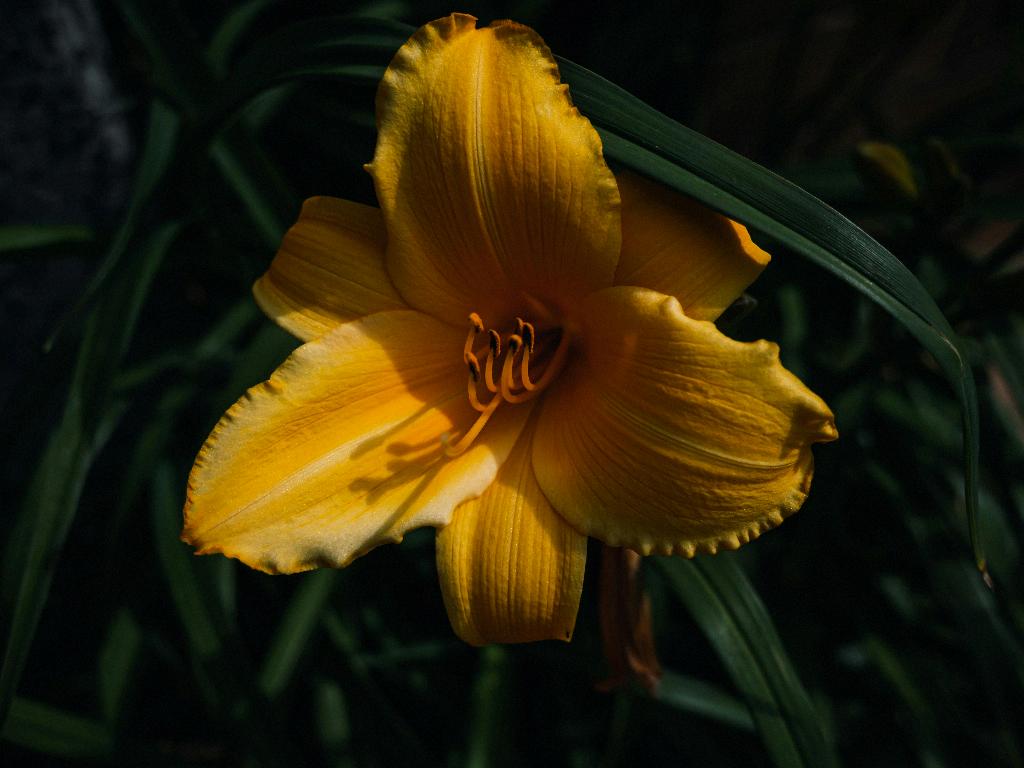If you’ve noticed your vibrant daylilies starting to turn yellow, there may be several reasons behind this common occurrence. As fall approaches and temperatures drop, daylily plants undergo a natural process that leads to the yellowing of their leaves. Understanding the factors at play can help you ensure the health and vitality of your daylilies even as the seasons change.
Natural Growth Cycle
One of the primary reasons for daylilies turning yellow is related to their natural growth cycle. As the days become shorter and temperatures cool in the fall, daylily plants begin to transition to a period of dormancy. This shift triggers a slowdown in photosynthesis, the process by which plants manufacture food, leading to a decrease in chlorophyll production and the characteristic yellowing of the leaves.
Seasonal Changes
With the arrival of fall, daylilies respond to the changing environmental conditions by preparing for winter dormancy. The yellowing of the leaves is a visible sign that the plants are redirecting their energy resources to focus on essential functions that will support their survival through the colder months. This natural response helps daylilies conserve energy and nutrients during a period of reduced growth.
Photosynthesis Slowdown
When daylilies shift to their autumn growth pattern, the gradual slowdown in photosynthesis contributes to the yellowing of the leaves. With fewer daylight hours and lower light intensity, the plants reduce their chlorophyll production, leading to the breakdown of the green pigment that gives leaves their color. As the chlorophyll diminishes, the underlying yellow pigments become more visible, resulting in the yellowing of the foliage.
Environmental Factors
Aside from the natural seasonal changes that trigger leaf yellowing in daylilies, environmental factors can also play a role in this process. Factors such as fluctuations in temperature, moisture levels, and sunlight exposure can influence the rate at which daylily leaves turn yellow. Monitoring these environmental conditions and making adjustments as needed can help minimize stress on the plants and support their overall health.
Soil Conditions
The health of the soil in which daylilies are planted can impact their foliage color and overall growth. Soil that is lacking in essential nutrients or has become compacted can affect the plants’ ability to absorb nutrients and water efficiently, leading to issues like leaf yellowing. Conducting soil tests, amending the soil as necessary, and maintaining proper drainage can help create optimal growing conditions for daylilies.
Pest and Disease Concerns
In some cases, the yellowing of daylily leaves may be a symptom of pest infestations or disease issues. Common pests that can affect daylilies include aphids, thrips, spider mites, and slugs, which may feed on the foliage and cause damage that leads to yellowing. Fungal diseases like leaf spot and rust can also contribute to leaf discoloration. Proper identification of pests and diseases is key to implementing effective treatment measures.
Pruning and Maintenance
Regular pruning and maintenance practices can help keep daylilies healthy and vibrant. Removing spent flower stalks, dead foliage, and any signs of pest or disease damage can promote new growth and discourage the spread of issues that may contribute to leaf yellowing. Maintaining good airflow around the plants and practicing proper sanitation can also aid in preventing problems.
Watering Practices
Proper watering is essential for the health of daylilies, especially during periods of active growth. Inadequate or excessive watering can stress the plants and impact their foliage color. It’s important to water daylilies deeply and infrequently, allowing the soil to dry out slightly between watering sessions. Mulching around the plants can help retain soil moisture and regulate temperature.
Light Requirements
Daylilies thrive in full sun to partial shade conditions, depending on the variety. Insufficient sunlight can result in weak growth and pale, yellowing leaves. Ensuring that daylilies receive adequate sunlight each day is crucial for their overall health and vigor. If growing daylilies in shadier locations, selecting varieties that are suited to lower light levels can help prevent issues with leaf yellowing.
Stress Factors
Stress factors such as overcrowding, competition with neighboring plants, or transplant shock can also contribute to leaf yellowing in daylilies. Providing sufficient space between plants, dividing overcrowded clumps, and ensuring proper planting techniques can help reduce stress on the plants and promote healthy growth. Minimizing disturbances to the root system is important to prevent transplant shock.
Overall Plant Health
Ensuring the overall health and vitality of daylilies is essential for preventing issues like leaf yellowing. By maintaining a balanced approach to care, including proper watering, fertilization, soil management, pest control, and maintenance practices, you can support the well-being of your daylilies and help them thrive throughout the growing season and beyond.

